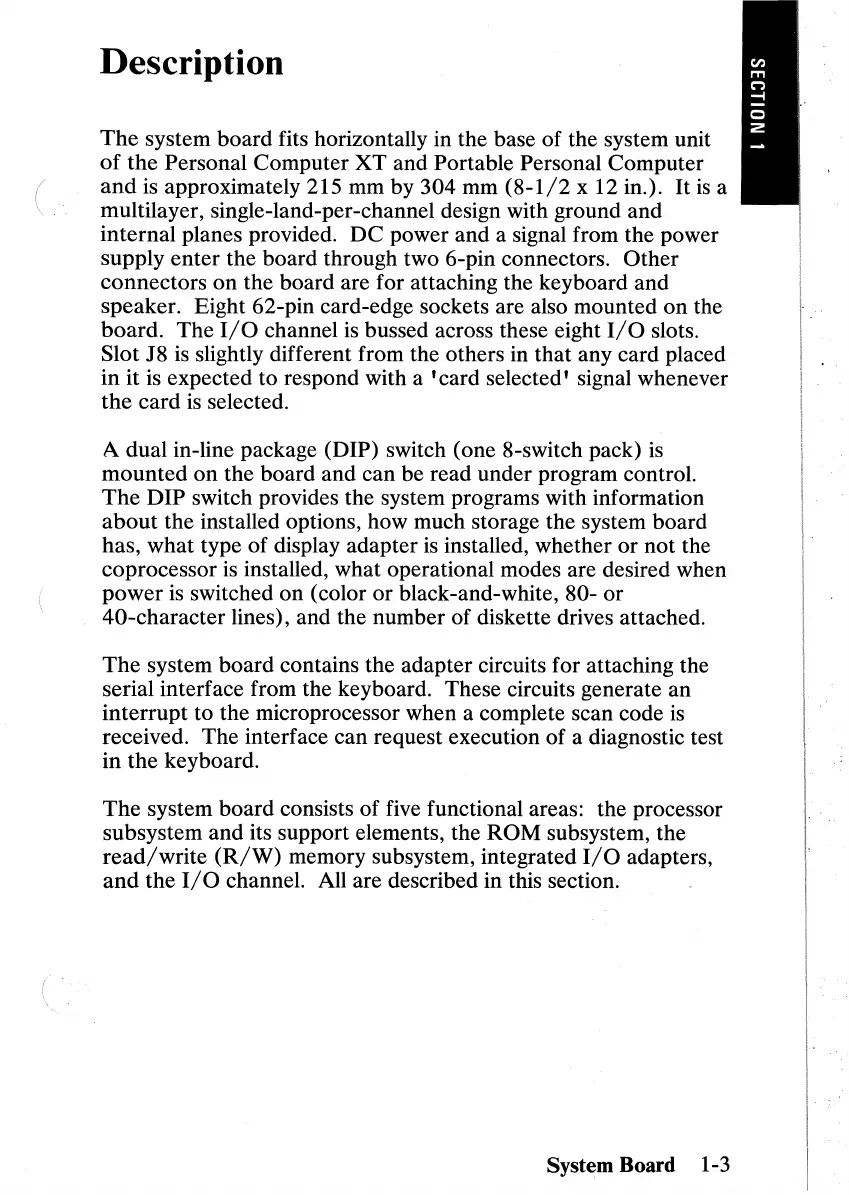Description
The
system board fits horizontally in the base of the system unit
of
the
Personal Computer
XT
and Portable Personal Computer
and
is approximately 215 mm by 304 mm
(8-1/2
x 12 in.).
It
is
a
multilayer, single-Iand-per-channel design with ground and
internal planes provided.
DC
power and a signal from the power
supply
enter
the board through two 6-pin connectors.
Other
connectors
on
the board are for attaching the keyboard and
speaker. Eight 62-pin card-edge sockets are also mounted
on
the
board.
The
I/O
channel is bussed across these eight
I/O
slots.
Slot J8 is slightly different from the others in that any card placed
in
it is expected to respond with a
'card
selected' signal whenever
the
card
is
selected.
A dual in-line package (DIP) switch (one 8-switch pack)
is
mounted
on
the board and can be read under program control.
The
DIP
switch provides the system programs with information
about
the installed options, how much storage the system board
has, what type
of
display adapter
is
installed, whether
or
not the
coprocessor
is
installed, what operational modes are desired when
power
is
switched
on
(color
or
black-and-white, 80-
or
40-character lines), and the number of diskette drives attached.
The
system board contains the adapter circuits for attaching the
serial interface from the keyboard. These circuits generate
an
interrupt
to the microprocessor when a complete scan code
is
received. The interface can request execution of a diagnostic test
in
the
keyboard.
The
system board consists
of
five functional areas: the processor
subsystem and its support elements, the
ROM
subsystem, the
read/write
(R/W)
memory subsystem, integrated
I/O
adapters,
and
the
I/O
channel. All are described in this section.
Syst~m
Board 1-3
